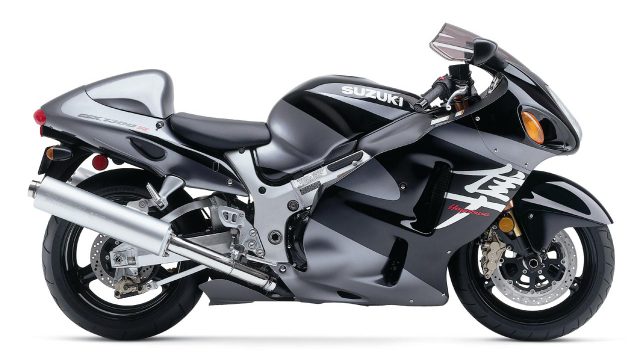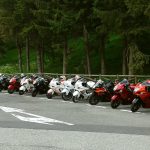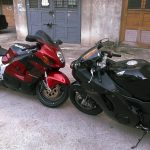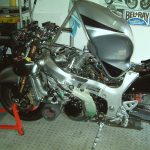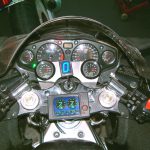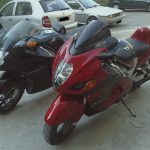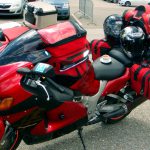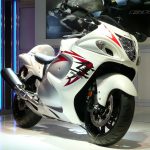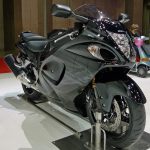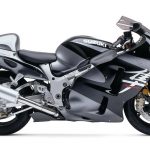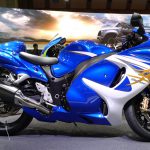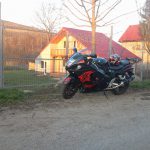” Suddenly, everything else looks like prey ”
The last choice in our list of Five motorcycles that shook the world is a superbike that needs no introduction. It is Japan's bird of prey and a motorcycle that brought together people from all across the world in huge fan-club families. We present you the legendary Suzuki Hayabusa!
Back in the mid and late ‘90s there was an unspoken challenge between the big Japanese motorcycle brands to create the world's fastest production bike. First, there was the Kawasaki Ninja ZX-11. After some time, Honda joined the party with the CBR 1100 XX (also known as the “Super Blackbird”), and was determined to build the fastest production motorcycle in the world. The name Honda gave to the CBR 1100 was not a coincidence. There is a species of a bird that is called Blackbird, and the world’s fastest aircraft is the Lockheed SR-71 Blackbird.
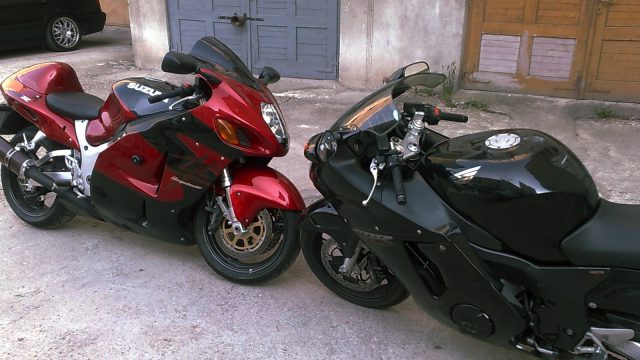
In 1999, Suzuki accepted the challenge and brought the GSX 1300R, also known as the Hayabusa. Some are saying that the name Suzuki gave to the GSX 1300R was a direct attack to Honda’s Blackbird. That’s because Hayabusa is the Japanese word for “peregrine falcon”, which is the natural predator of the blackbird.
When it was first shown to the public, the Hayabusa made a profound impression. It had a staggering top speed that exceeded 193 mph (312 km/h), depending on riding conditions, the rider’s weight, and other parameters. No other motorcycle had broken the top speed record (the previous record was 178 mph) with such a big margin. You might say that it’s not such a big difference, but at that speed, everything you know changes. The laws of physics are giving their best to stop you reaching your high-speed goal.
But how was this possible, you might ask. Well, the shape of the motorcycle was inspired by the peregrine falcon, also the fastest creature on Earth. When diving to its prey, it takes a bullet-shape to slip through the air molecules, reaching speeds of more than 200 mph.
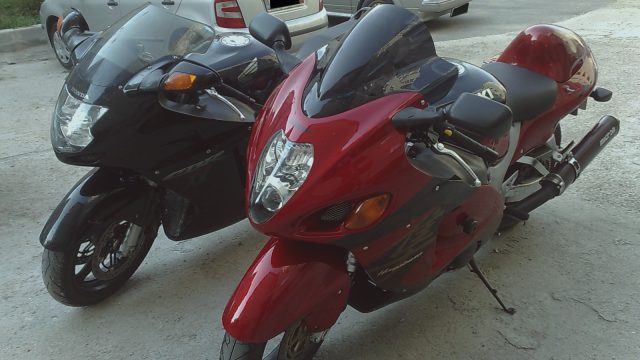
Every aspect of the Hayabusa was designed for speed, from the tip of the headlight to the back of the tail cowling. The front wheel is engulfed by a massive fender and the shape of the front fairing helps the motorcycle cut through the air. The fuel tank has two indents, one on each side, to accommodate the rider’s knees when leaning over it to reach high speeds. In addition, pillion’s seat comes with a solo seat cowl to make it more aerodynamic when there’s only one rider.
The not-so-traditional design of Hayabusa started a controversy. Some people were judging the motorcycle by its shape and not by functionality and its record-breaking purpose, which were the main criteria when the design was conceived. In 2009, the designer of the Hayabusa, Koji Yoshirua, said that he intended “to create a somewhat grotesque design and create a strong initial impact.” And he truly did so!
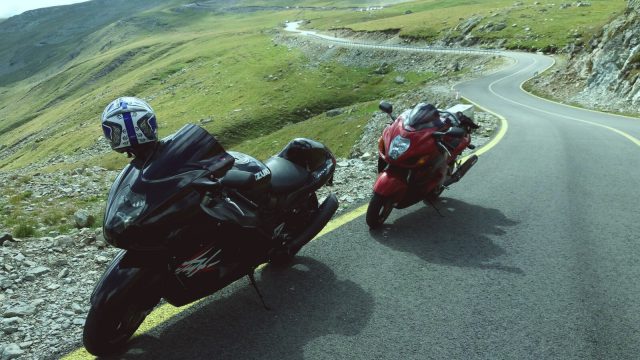
Enough with the design and aerodynamic mumbo-jumbo, what about the engine? The first generation of the Hayabusa had a 1,299-cc liquid-cooled, inline-four engine with 16 valves that were driven by double overhead cams. The engine was linked to a six-speed gearbox assisted by a hydraulic clutch system. The power plant delivered a claimed 129 kW (about 173 horsepower) at 9,500 – 9,700 rpm. To gain this high-performance output, Suzuki used a ram air system that acted like a cold air intake, delivering pressurized air into the cylinders at high speeds, thus increasing the efficiency of the fuel burning process.
The crankshaft used a counter balancer to reduce the vibrations. If there is little vibration, that means the engine can be mounted directly to the frame, which translates in increased chassis rigidity. If the chassis is rigid, the steering is sharper, helping the rider to sustain a fast pace riding on winding roads.

The reliability of the power plant has been proven over the years by riders that went on long trips around the continents. Under the Hayabusa’s fairings, ordinary people and customizers found one powerful and reliable engine to modify. Knowing that it was bullet-proof, some crazy folks across the world added turbo systems, pushing the power output of this engine to over 250 hp without changing the internals of the engine.
The suspension of this motorcycle was well fit for the style it tried to adopt. Being a sport-tourer, the suspension needed to provide a comfy yet a sporty ride, depending on the rider’s style, the load, and the adjustments made to the front and rear suspension. For the front suspension, Suzuki engineers used an inverted telescopic fork with fully adjustable spring preload, 14-way adjustable rebound damping, and 13-way adjustable compression. For the rear suspension, the winning solution was a link-type, gas and oil-damped, fully adjustable spring preload, with 22-way adjustable compression and rebound damping.

For the front braking system, Suzuki mounted two 320-mm rotors along with two six-pot Tokico calipers. Some say this wasn’t the best solution and the braking system needed an upgrade to have that strong bite everyone desires. To solve this, Hayabusa owners changed the rubber lines with stainless steel braided brake lines and the stock brake pads with high-quality brake pads. Second generation of Hayabusa received radial mounted calipers, increasing the efficiency of the braking system, along with other technical and aesthetic upgrades.
In 2000, Kawasaki boasted that a new model would be released, the Kawasaki Ninja ZX-12R, with the clear intention to dethrone the Hayabusa. Fearing there will be mayhem on the road produced by the high-speed motorcycles, Europeans started talking of regulating these hyper-motorcycles or even banning their import.
As a result, the top speed contest ended, and a gentlemen’s agreement between Japanese and European manufacturers was put in place. Every manufacturer agreed to electronically limit the speed of production motorcycles. From that moment, no one would build motorcycles that could go over 186 mph (300 km/h).
Before the gentlemen’s agreement, the Suzuki Hayabusa was listed in the 2000 Millennium Edition of Guinness World Records as the world’s fastest production bike with a staggering top speed of 194 mph (312 km/h), and this is one of the reasons we included it in our list.
See other bikes from our Five motorcycles that shook the world list:
1955 Moto Guzzi V8 – Ottocilindri Madness
1969 Honda CB750 – The Original Superbike
